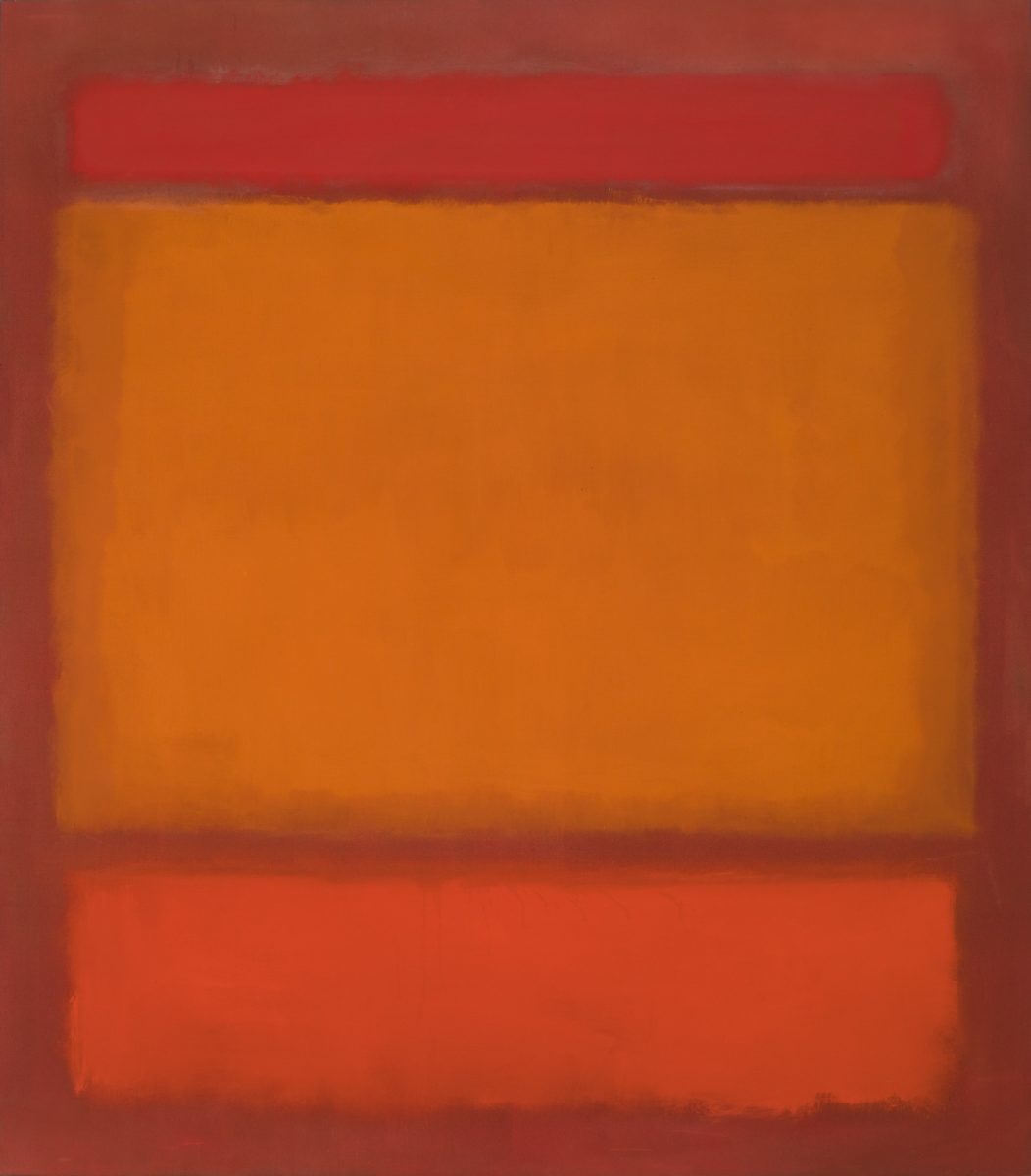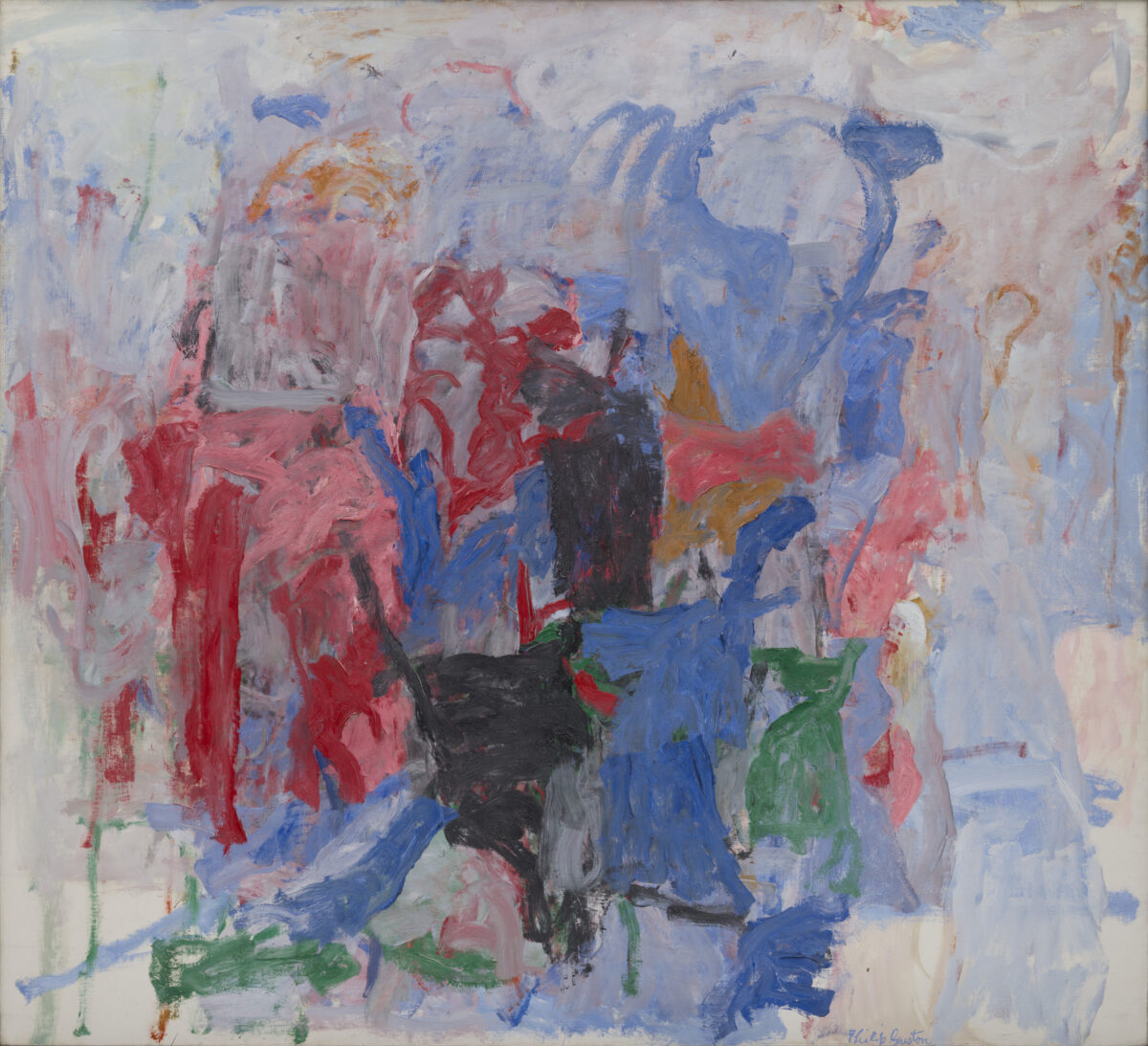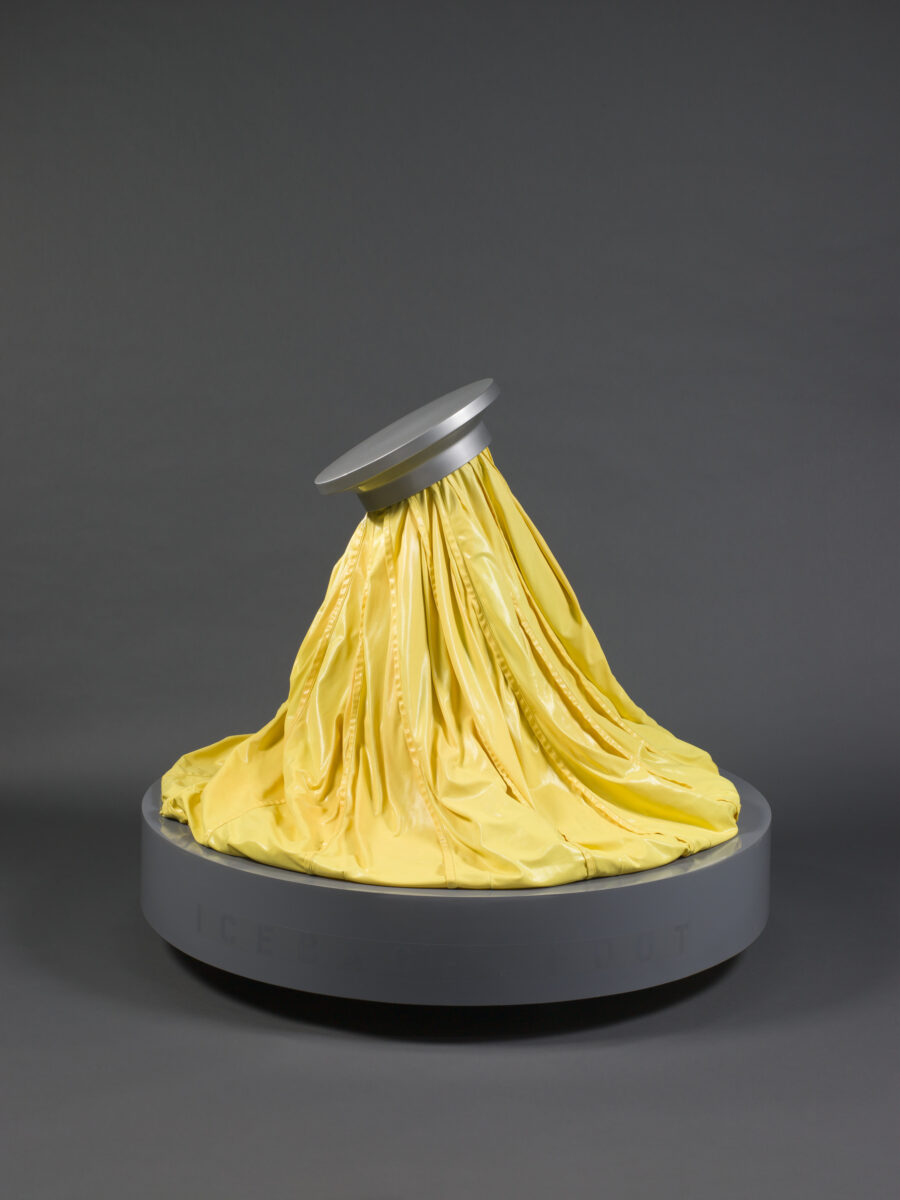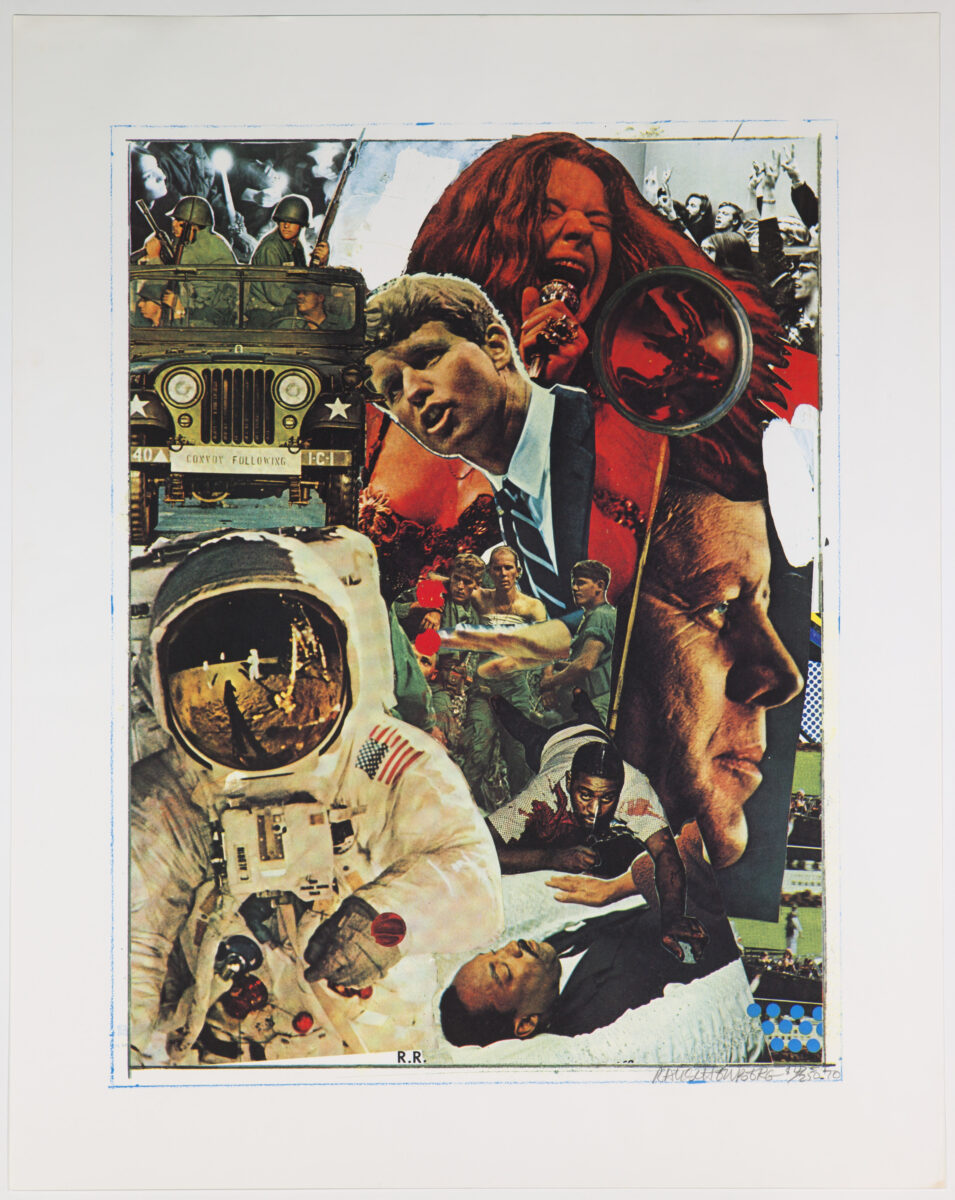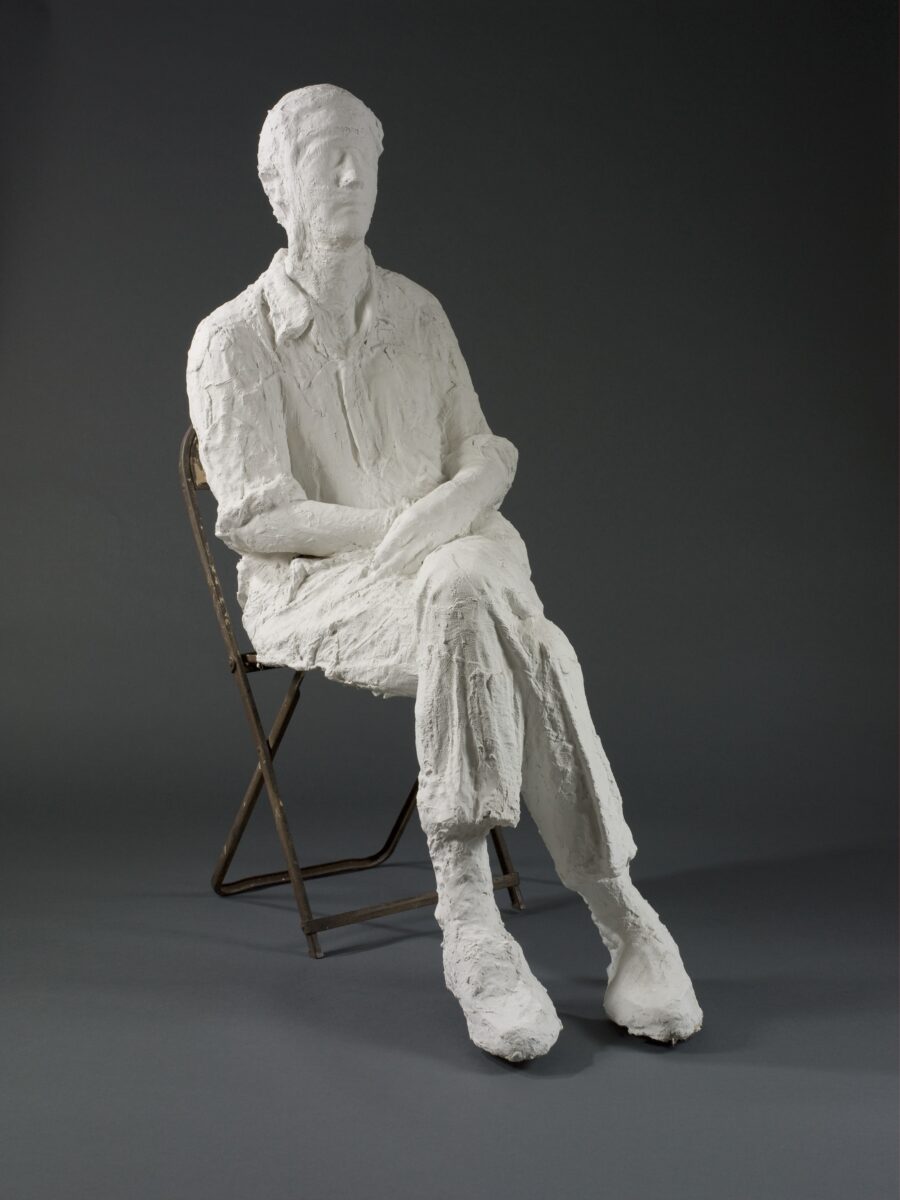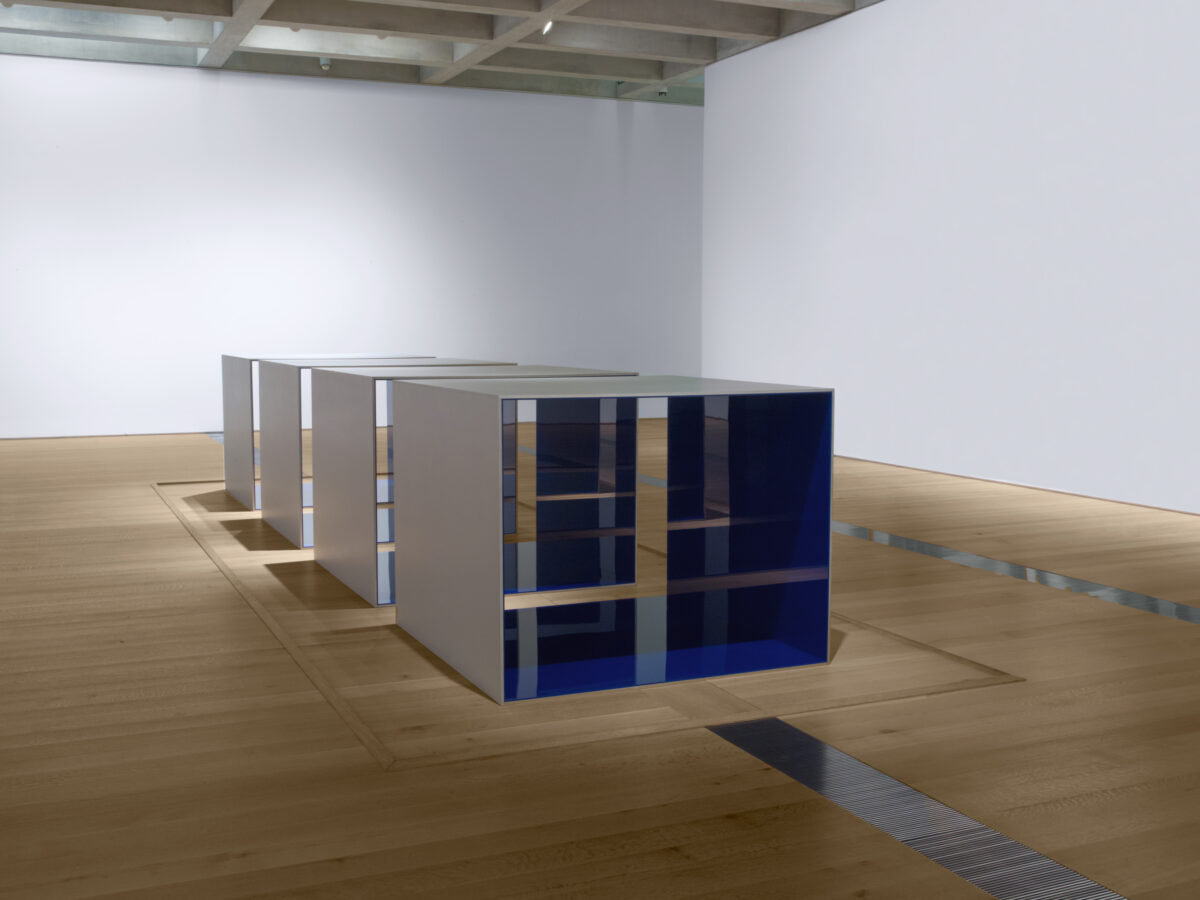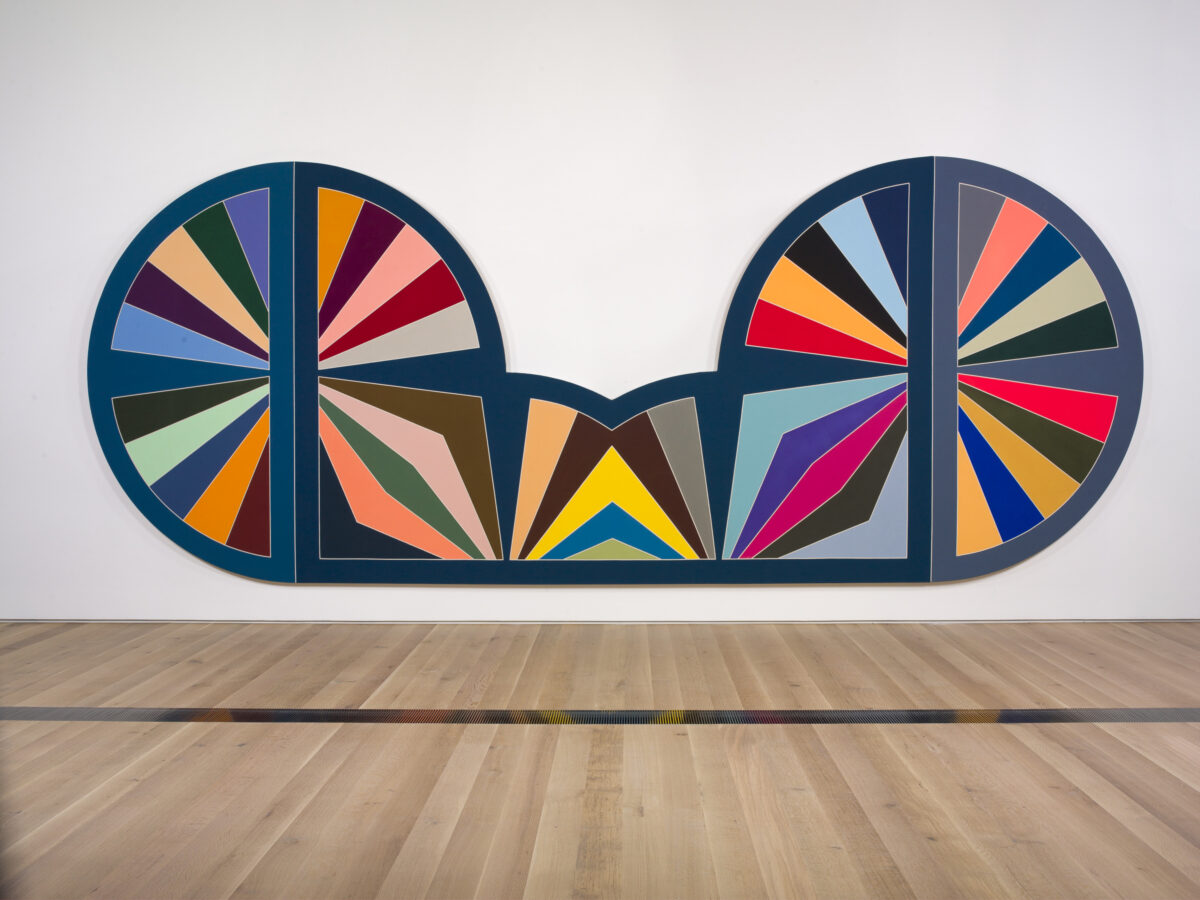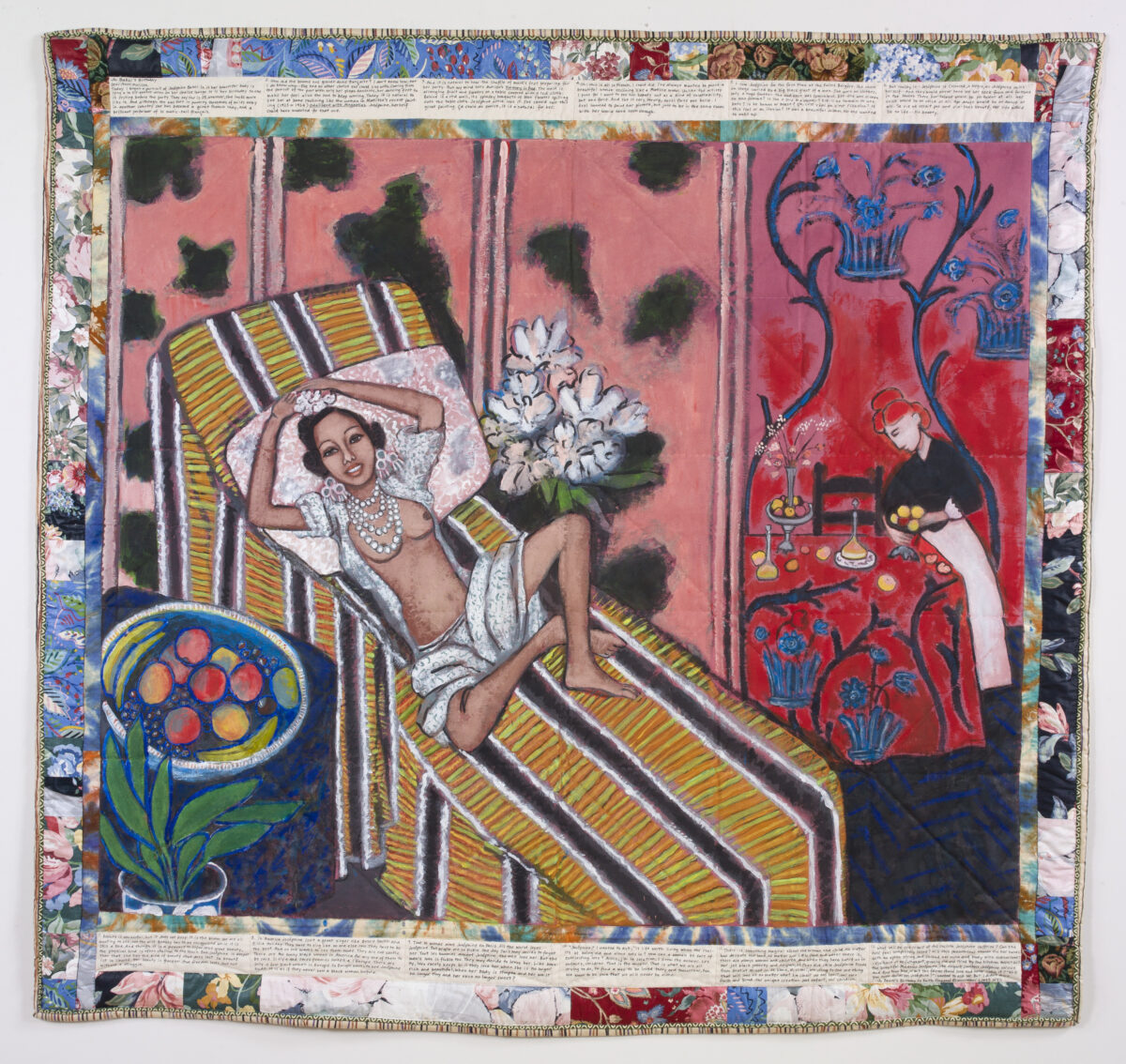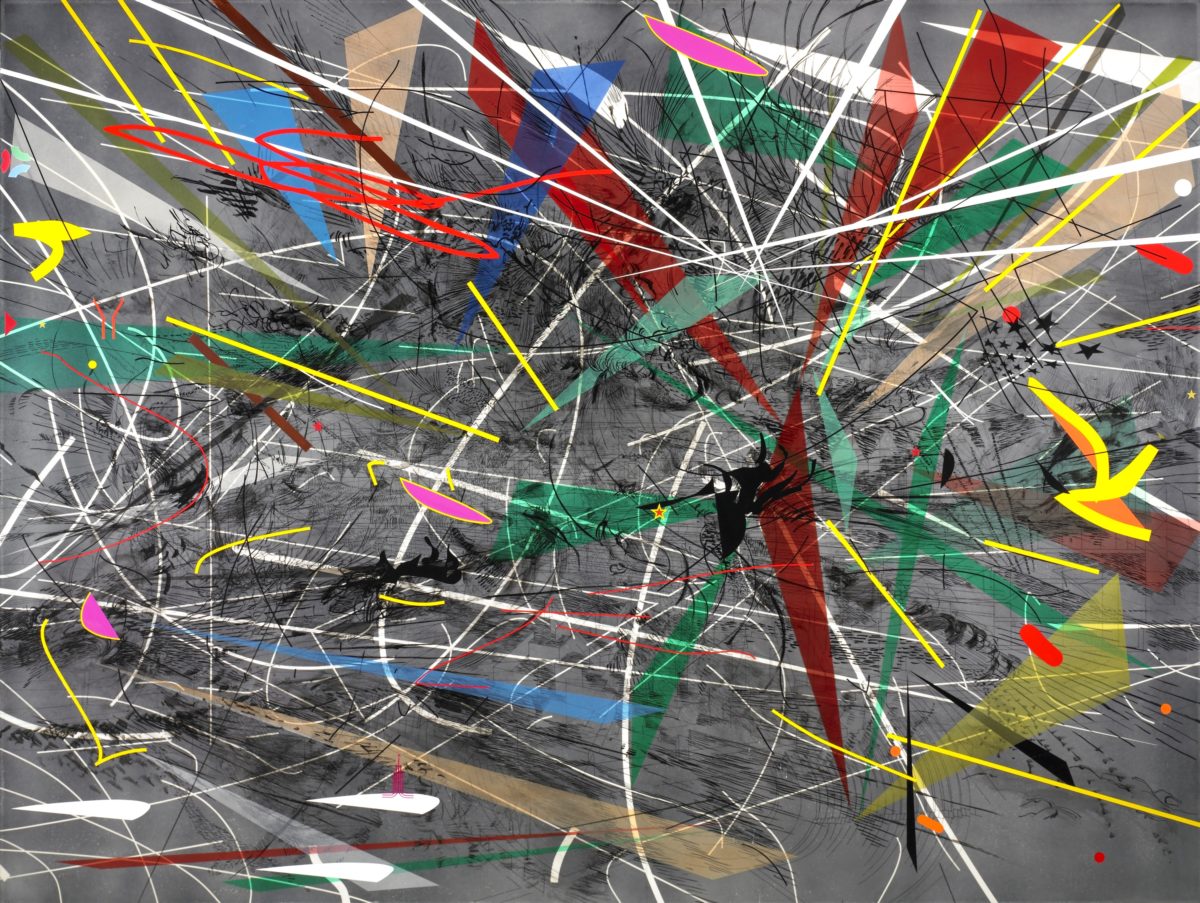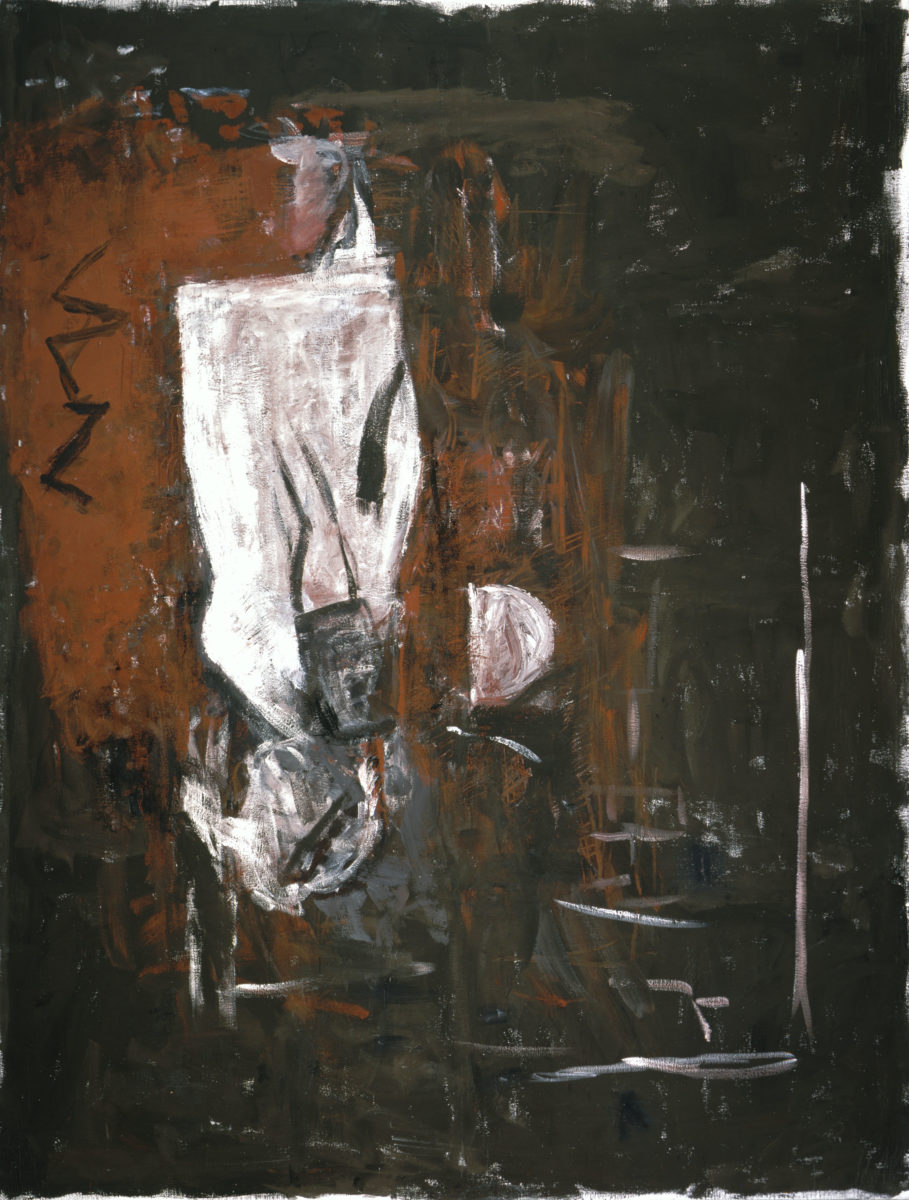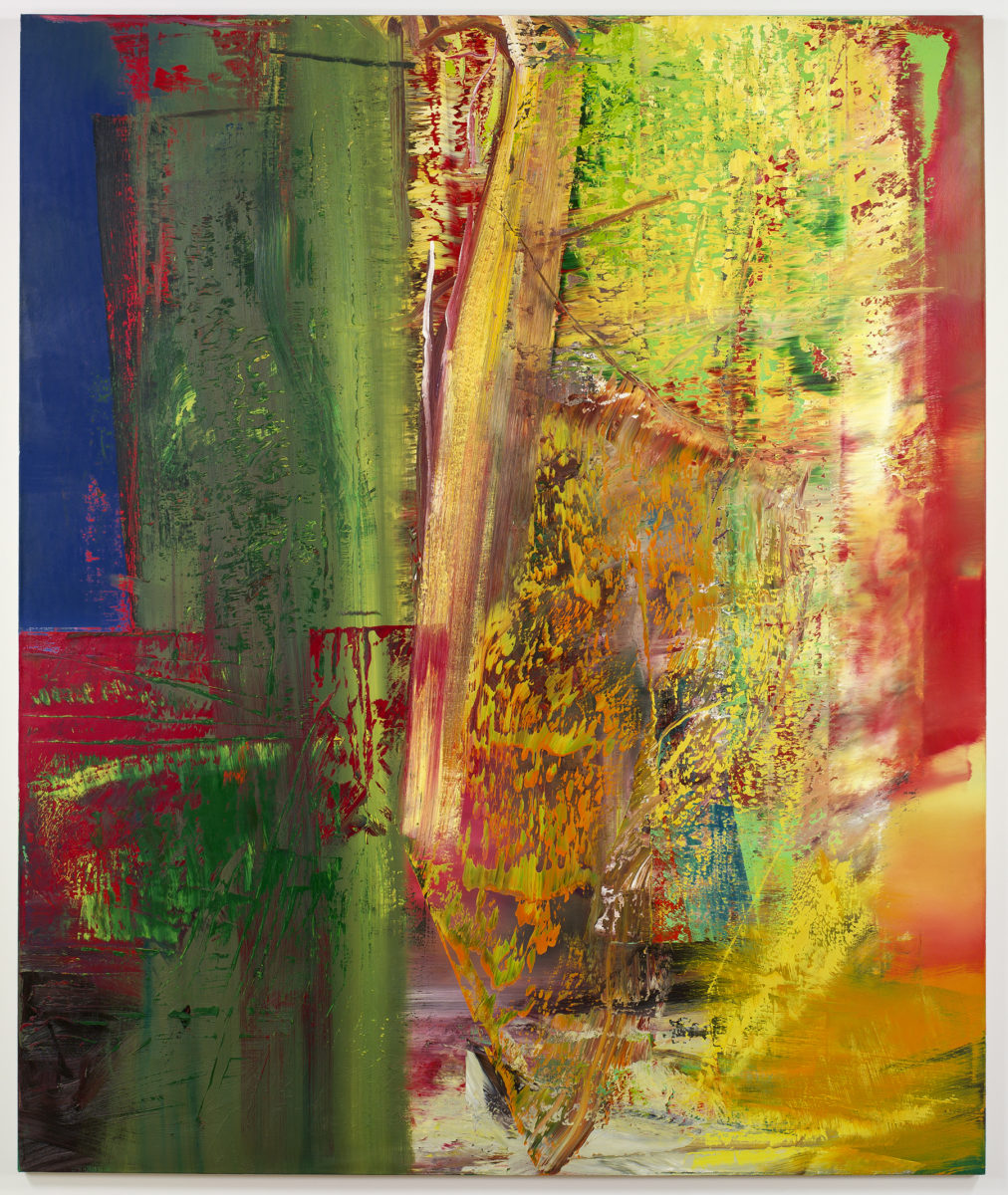Gerhard Richter, German, born 1932; Ölberg (detail), 1986; oil on canvas; 118 1/2 x 98 9/16 inches; Saint Louis Art Museum; Museum Purchase 107:1987 © 2013 Gerhard Richter
More than 40 works from the Museum’s postwar and contemporary collection have been temporarily reinstalled in the galleries typically reserved for ticketed exhibitions in order to accommodate the East Building footprints of Anselm Kiefer: Becoming the Sea this fall and Ancient Splendor: Roman Art in the Time of Trajan in spring 2026.
Reimagining the postwar and contemporary collection in a new space allows several works to return on view for the first time in many years, according to modern and contemporary art curator Simon Kelly, who oversaw the installation.
“It’s an opportunity to see familiar works in fresh ways, like the Dan Flavin light sculpture, which will be installed in a gallery space by itself,” Kelly said. “There will be a range of contemporary German paintings on view that will provide valuable context for the Kiefer exhibition.”
-
Mark Rothko, American (born Russia, present-day Latvia), 1903–1970; Red, Orange, Orange on Red, 1962; oil on canvas; 91 3/4 x 80 1/2 inches; Saint Louis Art Museum, Funds given by the Shoenberg Foundation, Inc. 129:1966; © 1998 Kate Rothko Prizel & Christopher Rothko / Artists Rights Society (ARS), New York
-
Philip Guston, American (born Canada), 1913–1980; Room 112, 1957; oil on canvas; 62 x 68 1/2 inches; Saint Louis Art Museum, Gift of Mr. and Mrs. Joseph Pulitzer Jr. 249:1966; © 2025 Estate of Philip Guston
The installation is divided into five themes, beginning with Abstract Expressionism. By the end of the 1950s, Abstract Expressionism was the defining style of a distinctly American avant-garde, celebrated for individuality, freedom of expression, and ambitious scale. Energetic brushstrokes and paint splatters, like that of Franz Kline or Joan Mitchell, and repeated expanses of color, which became a popular style by Mark Rothko, formed the two principal strands of the movement.
-
Claes Oldenburg, American (born Sweden), 1929–2022; produced by Gemini G.E.L. (Graphic Editions Limited), Los Angeles, California, founded 1966; Ice Bag–Scale B, 1971; nylon, fiberglass, mechanism, paint, lacquer, blowers, anodized parts, steel, zipper, acrylic, muslin, Velcro; height (variable): 35 1/4 inches, diameter: 48 1/4 inches; Saint Louis Art Museum, Gift of Nancy Singer 11:1975; © Claes Oldenburg
-
Robert Rauschenberg, American, 1925–2008; printed by Styria Studio, New York, New York; published by Castelli Graphics, New York, New York, founded 1957; Signs, 1970; screenprint; 42 7/8 x 34 inches; Saint Louis Art Museum, Gift of the Honorable and Mrs. Thomas F. Eagleton 311:1986; © Robert Rauschenberg Foundation
-
George Segal, American, 1924–2000; Richard Bellamy Seated, 1964; plaster and metal; 49 3/4 x 39 1/2 x 20 inches; Saint Louis Art Museum, Gift of Judith Aronson in memory of Adam Aronson 9:2010a,b; © 2025 The George and Helen Segal Foundation / Licensed by Artists Rights Society (ARS), New York
As the Abstract Expressionism movement peaked around 1960, Pop Art was on the rise. These artists adopted humor and irony, both embracing and critiquing consumerism, celebrity culture, and the ordinary. For example, sculptor Claes Oldenburg recreated domestic objects and food items at a greatly enlarged scale, and Alex Katz later created a series of works that reference Coca-Cola. George Segal’s sculpture of Richard, or Dick, Bellamy brings to life this art dealer, whose gallery, Green Gallery, was so important to the rise of Pop Art, and who represented many of the artists included in this section.
-
Donald Judd, American, 1928–1994; Untitled, 1969; anodized aluminum and Plexiglas; each unit: 47 1/2 x 59 7/8 x 59 7/8 inches; Saint Louis Art Museum, Funds given by the Shoenberg Foundation, Inc. 1:1970a-d; Donald Judd Art © 2025 Judd Foundation / Artists Rights Society (ARS), New York
-
Frank Stella, American, 1936–2024; Madinat as-Salam III, 1971; acrylic on canvas; 120 inches x 25 feet; Saint Louis Art Museum, Gift of Mr. and Mrs. Lawrence H. Greenberg, Mr. and Mrs. Robert G. Greenberg, and Mr. and Mrs. Ronald K. Greenberg 250:1975; © 2025 Frank Stella / Artists Rights Society (ARS), New York
Minimalist works by Donald Judd and Flavin are featured in the next section. The Minimalist movement is characterized by geometric shapes, industrial materials, and simplified designs that make the viewer central to the art. Other noteworthy artists associated with the movement included painters, like Frank Stella and Ellsworth Kelly, who produced large-scale, shaped canvases that blurred conventional boundaries between painting and sculpture. This section also offers the opportunity to show related works by Cy Twombly and Sheila Hicks that have not been on view in many years.
-
Faith Ringgold, American, 1930–2024; Jo Baker's Birthday, 1993; acrylic on canvas with tie-dyed and printed fabric; 74 1/4 x 78 1/2 inches; Saint Louis Art Museum, Museum Minority Artists Purchase Fund, the Honorable Carol E. Jackson, Casually Off-Grain Quilters of Chesterfield, Mr. and Mrs. Steven M. Cousins, Mr. and Mrs. Lester A. Crancer Jr., Mr. and Mrs. Solon Gershman, Mr. Sidney Goldstein in memory of Chip Goldstein, The Links, Inc., Gateway Chapter, the Honorable and Mrs. Charles A. Shaw, Donald M. Suggs, the Thimble & Thread Quilt Guild, and funds given in honor of Cuesta Benberry 10:1994; © 2025 Faith Ringgold / Artists Rights Society (ARS), New York
-
Julie Mehretu, American (born Ethiopia), born 1970; Grey Space (distractor), 2006; acrylic and ink on canvas; 72 x 96 inches; Saint Louis Art Museum, Gift of the Honorable and Mrs. Thomas F. Eagleton by exchange, Siteman Contemporary Art Fund, and funds given by Emily Rauh Pulitzer 1:2010; © Julie Mehretu
The next gallery is “Spaces of Resistance” and includes works from the 1980s to today by artists who have made art as a tool for resistance, activism, and cultural expression. Works include Nick Cave’s Soundsuit, made in response to the beating of Rodney King by Los Angeles Police in 1991; Julie Mehretu’s Grey Space (distractor) that resists wider societal systems of power and oppression; and David Hammons’s Untitled (Basketball Drawing), which emphasizes the importance of the sport in African American culture.
-
Georg Baselitz, German, born 1938; White Woman, 1980; tempera on canvas; 130 x 98 5/16 inches; Saint Louis Art Museum, Funds given by Mrs. Alvin R. Frank, Bruce and Kimberly Olson, and Mr. and Mrs. Thomas K. Langsdorf 7:2003; © Georg Baselitz 1980
-
Gerhard Richter, German, born 1932; Ölberg, 1986; Oil on canvas; 118 1/2 x 98 9/16 inches; Saint Louis Art Museum; Museum Purchase 107:1987 © 2013 Gerhard Richter
German art is a particular strength of SLAM’s collection, and the final section of the postwar and contemporary installation focuses on art made in the divided Germany of the 1970s and ’80s. These decades, in particular, saw the rise of a movement that critics at the time labeled Neo-Expressionism, which was associated with artists Georg Baselitz, A. R. Penck, Markus Lüpertz, and Jörg Immendorff, as well as Anselm Kiefer. A regular fixture of the Museum’s contemporary collection, Gerhard Richter’s Ölberg will also be reinstalled in this space. Richter’s Gray Mirror will have a space to itself in an adjoining gallery.
A free presentation, the reinstallation of the postwar and contemporary collection will be on view until fall 2026 in space typically reserved for ticketed exhibitions.
